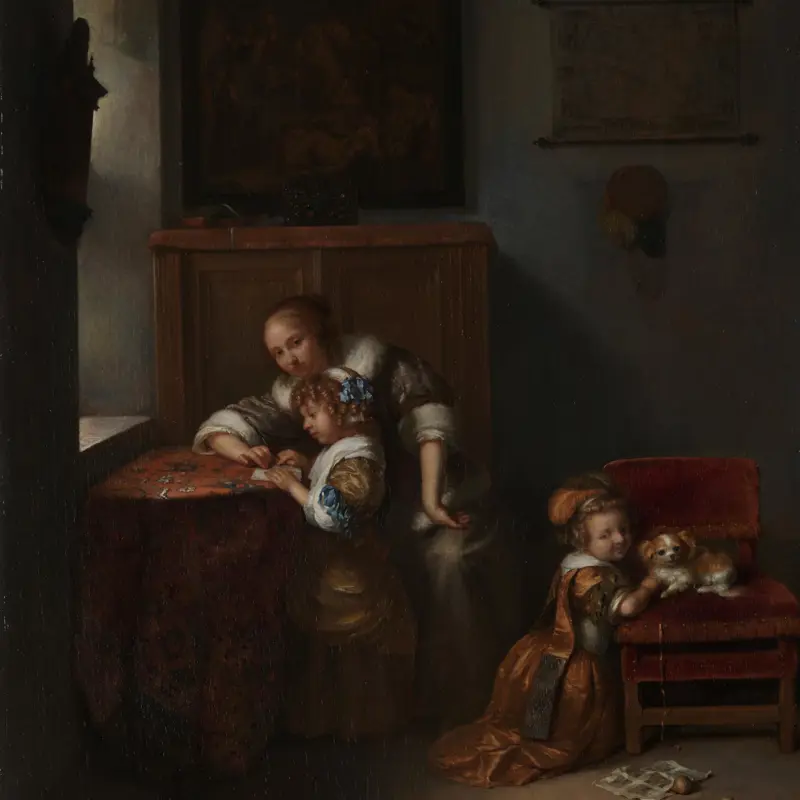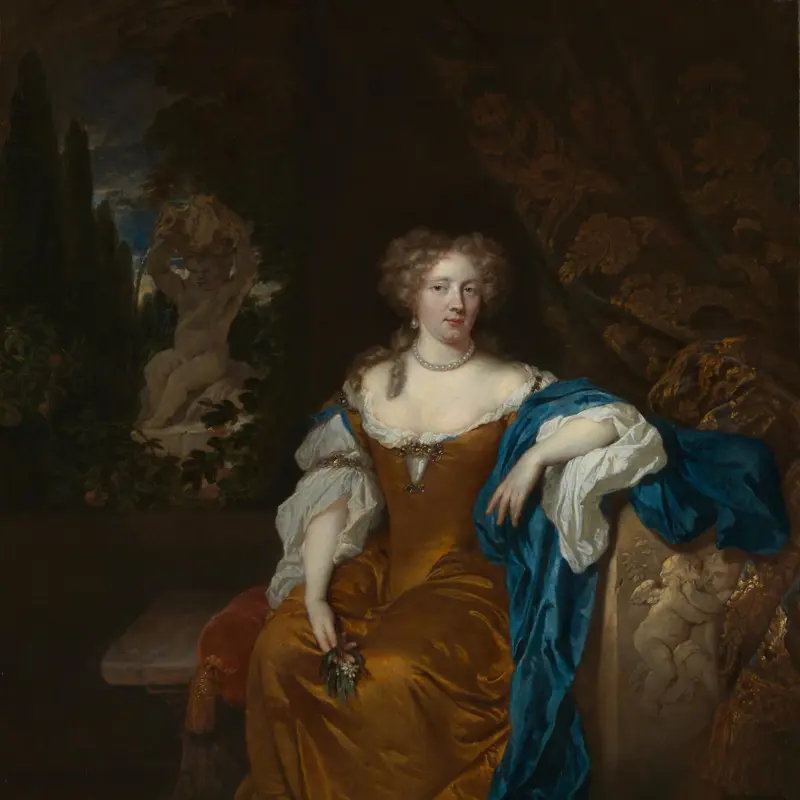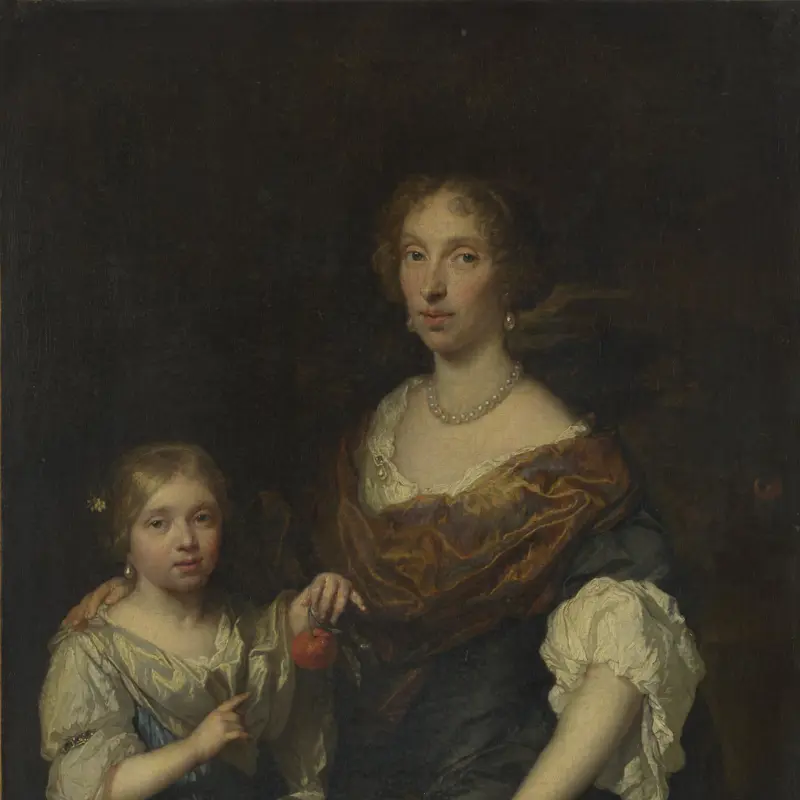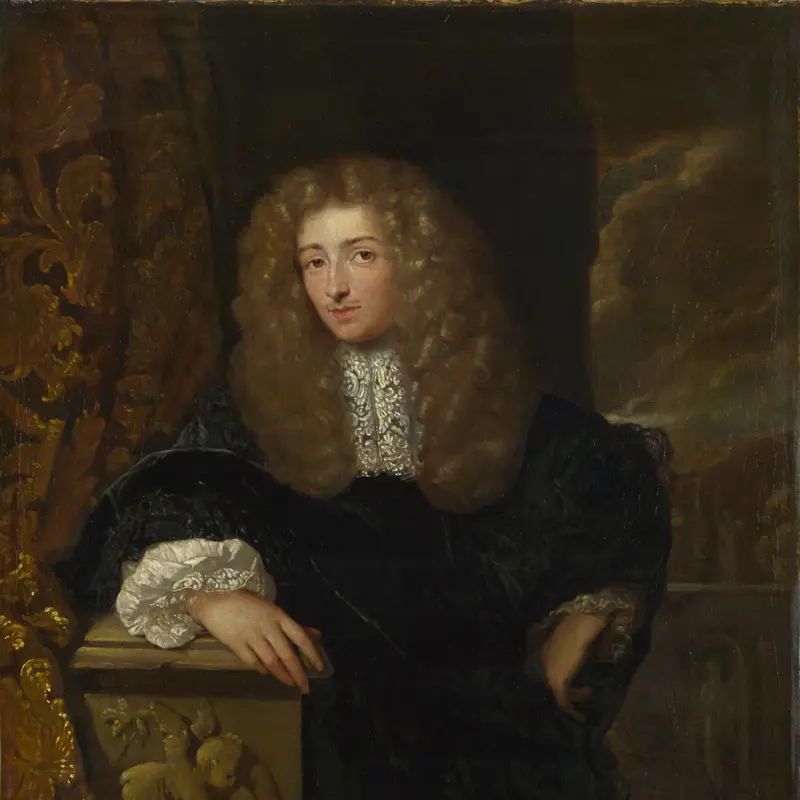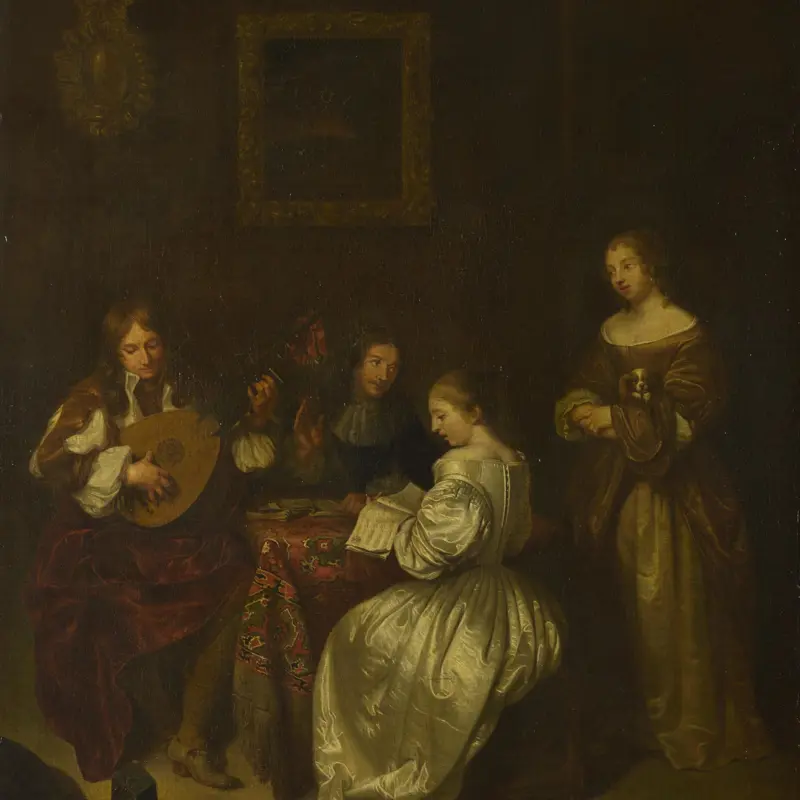Caspar Netscher, 'Two Boys blowing Bubbles', about 1670
About the work
Overview
A velvet curtain drawn back from a stone window reveals a little boy, who gazes upwards at a bubble floating past him and into the darkness. In the shadows behind, a smaller child concentrates equally fiercely. Using a long pipe he blows bubbles in the soapy liquid held in a cockle shell. Already a tiny iridescent sphere is forming.
The painting is a homo bulla (‘man is a bubble’). Because bubbles burst so quickly, this is an allegory intended to suggest the shortness of life. The tradition of the homo bulla reaches back into medieval times when the children were portrayed nude, as putti or cherubs with wings. The Dutch, although embracing the idea as a life warning, seem to have preferred their children more realistic and fully clad.
Key facts
Details
- Full title
- Two Boys blowing Bubbles
- Artist
- Caspar Netscher
- Artist dates
- 1635/6 - 1684
- Date made
- about 1670
- Medium and support
- oil on wood
- Dimensions
- 31.2 × 24.6 cm
- Inscription summary
- Signed
- Acquisition credit
- Bought, 1871
- Inventory number
- NG843
- Location
- Room 15a
- Collection
- Main Collection
- Previous owners
- Frame
- 17th-century Dutch Frame
Provenance
Additional information
Text extracted from the ‘Provenance’ section of the catalogue entry in Neil MacLaren, revised and expanded by Christopher Brown, ‘National Gallery Catalogues: The Dutch School: 1600–1900’, London 1991; for further information, see the full catalogue entry.
Exhibition history
-
2019Soap Bubbles. Forms of Utopia between Vanitas, Art and Science.Galleria Nazionale dell'Umbria9 March 2019 - 9 June 2019
Bibliography
-
1781Collection de cent-vingt estampes: Graveés d'après les tableaux 2 dessins qui composaient le cabinet de M. Poullain, Paris 1781
-
1829
J. Smith, A Catalogue Raisonné of the Works of the Most Eminent Dutch, Flemish, and French Painters: In Which is Included a Short Biographical Notice of the Artists, with a Copious Description of Their Principal Pictures […], 9 vols, London 1829-1842
-
1844A.M. Jameson, Companion to the Most Celebrated Private Galleries of Art in London: Containing Accurate Catalogues, Arranged Alphabetically, for Immediate Reference, Each Preceded by an Historical & Critical Introduction […], London 1844
-
1907C. Hofstede de Groot, Catalogue Raisonné of the Works of the Most Eminent Dutch Painters of the Seventeenth Century, 10 vols, London 1907
-
1907C. Hofstede de Groot, Catalogue Raisonné of the Works of the Most Eminent Dutch Painters of the Seventeenth Century, 10 vols, London 1907
-
1938W. Stechow, 'Homo Bulla', Art Bulletin, XX, 1938, pp. 227-78
-
1960Maclaren, Neil, National Gallery Catalogues: The Dutch School, 2 vols, London 1960
-
1976C. Brown, Art in Seventeenth Century Holland (exh. cat. The National Gallery, 30 September - 12 December 1976), London 1976
-
1976E. de Jongh, Tot Lering en Vermaak: Betekenissen van Hollandse genrevoorstellingen uit de zeventiende eeuw (exh. cat. Rijksmuseum, 16 September - 5 December 1976), Amsterdam 1976
-
1983M.F. Durantini, The Child in Seventeenth-Century Dutch Painting, Ann Arbor 1983
-
1991Maclaren, Neil, revised by Christopher Brown, National Gallery Catalogues: The Dutch School, 1600-1900, 2nd edn (revised and expanded), 2 vols, London 1991
-
1991M. Emmer, Bolle di sapone: Un viaggio tra arte, scienza e fantasia, Florence 1991
-
1994National Gallery, Ideas Personified (exh. cat. The National Gallery, 28 September - 4 December 1994), London 1994
-
2001
C. Baker and T. Henry, The National Gallery: Complete Illustrated Catalogue, London 2001
About this record
If you know more about this work or have spotted an error, please contact us. Please note that exhibition histories are listed from 2009 onwards. Bibliographies may not be complete; more comprehensive information is available in the National Gallery Library.


